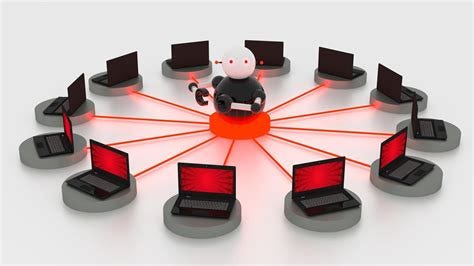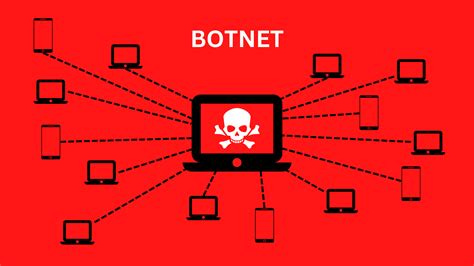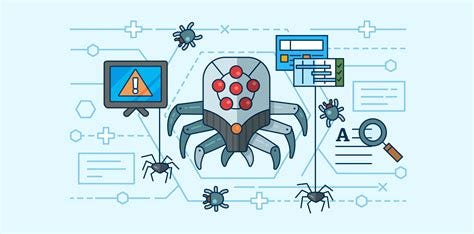Introduction
Welcome to the Wild, Wild Web! A place where the digital gold rush meets the cyber outlaws, and the sheriffs are armed with nothing but code. In this thrilling expanse, there’s a new player in town: decentralized botnets. Imagine a swarm of drones, each with its own mind, yet united in purpose, buzzing through the digital skies. Some are here to protect the town, while others have more nefarious plans. This tale isn’t just about the good, the bad, and the ugly; it’s about the good, the bad, and the secure.

Decentralized botnets are like the double-edged swords of cyberspace. On one edge, they’re wielded by cyber villains, launching attacks that can topple websites and steal secrets. On the other, they’re the heroes’ gadgets, used to fortify the digital fortress and keep the virtual townsfolk safe. And who’s leading the charge on the side of good? Armur AI, the cyber marshal in this story, is here to ensure that the power of decentralized botnets is harnessed for the forces of cybersecurity.
So, buckle up, dear reader, as we embark on an odyssey through the binary badlands. We’ll explore the concept of decentralized botnets, unearth how they’re wielded for evil, and reveal how the white hats, like the folks at Armur AI, are flipping the script to protect the digital frontier. It’s going to be a fun ride, filled with technical tidbits and professional insights, all wrapped up in a narrative that’s as engaging as your favorite spaghetti western. Let’s dive in!
What are Decentralized Botnets?
Imagine a bustling ant colony, a marvel of nature’s ingenuity, where each ant acts independently yet contributes to the collective goal. Now, picture a digital counterpart: decentralized botnets. Unlike their centralized siblings, where one puppet master pulls the strings, decentralized botnets operate under a distributed command-and-control structure, much like a blockchain network. This setup not only makes them more resilient to take-down efforts but also obscures their tracks from the prying eyes of cybersecurity experts.

Decentralized botnets thrive on the principle of distribution. Instead of a single server issuing commands, these botnets use peer-to-peer networks—each infected device (a bot) can act as a command and control center for others. This method is akin to guerrilla warfare in cyberspace, where the attack surface is as wide as the internet itself.
The Technical Backbone: Blockchain and Beyond
At the heart of decentralized botnets lies a concept borrowed from blockchain technology: decentralization. By leveraging decentralized networks, botnets achieve a level of robustness and anonymity that traditional centralized networks can’t match. Commands are distributed across countless nodes, making these botnets incredibly difficult to dismantle. It’s like trying to stop a rumor in a crowded marketplace—by the time you’ve convinced one person it’s false, ten more have spread it further.

Peer-to-Peer (P2P) Networks: The skeleton of decentralized botnets, P2P networks allow for the dynamic distribution of commands and control without a central point of failure. Each bot in the network can receive instructions from multiple other bots, ensuring that the botnet remains operational even if several bots are taken down.
Cryptography and Anonymity: Just as cryptocurrencies use encryption to secure transactions and maintain user anonymity, decentralized botnets use similar cryptographic techniques to hide their activities and the identities of their controllers. This makes tracing and prosecuting the perpetrators a daunting task.
The Emergence of Decentralized Botnets
The evolution from centralized to decentralized botnets marks a significant shift in the landscape of cyber threats. It reflects the adaptability of cybercriminals and their willingness to incorporate the latest technological advances into their arsenal. The decentralized structure not only complicates cybersecurity efforts but also mirrors the decentralized nature of the internet itself, exploiting its very architecture for malicious intent.
The Dark Side: Malicious Use of Decentralized Botnets
A Digital Pandora’s Box: Just as Pandora’s box unleashed woes untold upon the world, the emergence of decentralized botnets has opened a new chapter in cyber threats, one that’s as menacing as it is sophisticated. The decentralized nature of these networks makes them the Swiss Army knife for cybercriminals, capable of launching a variety of attacks with devastating effects.
DDoS Attacks: The Cyber Siege
Imagine an army laying siege to a fortress, overwhelming its defenses with sheer numbers. This is the digital equivalent of a Distributed Denial of Service (DDoS) attack, where a decentralized botnet bombards a target with so much traffic that it collapses under the load. The decentralized structure makes these attacks not only harder to trace but also more difficult to stop, as the source of the onslaught is not a single entity but hundreds or thousands of infected devices spread across the globe.

Data Breaches: The Stealthy Thieves
In the cover of digital night, decentralized botnets can act as stealthy thieves, infiltrating secure databases and exfiltrating sensitive information. The distributed nature allows these nefarious networks to launch coordinated attacks from multiple points, confusing defense systems and evading detection until it’s too late.
Malware Distribution: The Trojan Horses
Decentralized botnets are also the perfect Trojan horses for distributing malware. By commandeering a vast network of devices, cybercriminals can push malicious software to unsuspecting users at an unprecedented scale. The malware then spreads, worm-like, through the network, commandeering more devices and expanding the botnet’s reach.
The Technical Challenge
The decentralized architecture of these botnets poses a significant challenge to cybersecurity professionals. Traditional countermeasures, designed to target and take down central command and control servers, are ineffective against a distributed, headless beast that is everywhere and nowhere at once. It’s a game of digital whack-a-mole, where for every bot taken down, another pops up in its place.
The Silver Lining: Beneficial Uses of Decentralized Botnets
A Twist in the Tale: Not all bots are born bad. In the realm of cybersecurity, the same technologies that fuel malicious endeavors can also be harnessed for noble causes. Decentralized botnets, often vilified for their role in cyber attacks, hold the potential to revolutionize the way we think about and implement cybersecurity. Let’s explore the brighter side of these digital swarms.
Web Crawling: The Benevolent Spiders
Picture the vast expanse of the internet as a sprawling metropolis. Decentralized botnets can act as benevolent spiders, weaving their way through this digital landscape to index information. This decentralized approach to web crawling can dramatically improve the efficiency and comprehensiveness of search engines, helping to organize the world’s information in a more democratic and accessible way.

Distributed Computing: The Collective Brainpower
Imagine harnessing the processing power of millions of devices across the globe to tackle some of humanity’s most challenging problems. Decentralized botnets can be repurposed for distributed computing projects, such as protein folding simulations in medical research or the search for extraterrestrial intelligence (SETI). This collective brainpower can achieve computational feats that would be impossible for any single machine, opening new frontiers in scientific discovery.
Enhancing Cybersecurity: The Irony
Here’s where the plot thickens: decentralized botnets can be the heroes in our cyber tale. By simulating cyber attacks, these networks allow cybersecurity professionals to test and fortify digital defenses in a controlled, real-world scenario. It’s the cybersecurity equivalent of a fire drill, ensuring that when a real threat emerges, our digital fortresses are battle-ready.
Armur AI: The Vanguard of Cybersecurity
Enter Armur AI, the maverick turning the tide against cyber threats by harnessing the power of decentralized botnets for good. Armur AI’s innovative approach involves using these networks to simulate advanced cyber threats, allowing organizations to preemptively identify vulnerabilities and shore up their defenses.
The Technical Edge: Armur AI leverages the inherent resilience and distributed nature of decentralized botnets to create a more robust and comprehensive cybersecurity testing ground. This not only prepares organizations for a wide range of attack vectors but also trains their systems to respond more effectively to real-world threats.

A Case in Point: Through Armur AI’s simulations, a financial institution was able to detect and patch a critical vulnerability in its transaction processing system—a flaw that could have been exploited to siphon off millions. This proactive approach to cybersecurity exemplifies how the power of decentralized networks can be redirected to fortify our digital domains.
The Future of Cybersecurity with Decentralized Botnets
Charting Uncharted Waters: As we stand on the precipice of a new era in cybersecurity, it’s clear that decentralized botnets will play a pivotal role in shaping the battlefield. The question is not if, but how they will influence the ongoing war against cyber threats. Let’s dive into some predictions and insights on the future of cybersecurity in the age of decentralized networks.
The Evolving Threat Landscape
The cat-and-mouse game between cybercriminals and cybersecurity professionals is set to intensify. Decentralized botnets, with their resilience and adaptability, will likely become a favored tool in the arsenal of cyber adversaries. However, this is not a one-sided affair. The same characteristics that make decentralized botnets a formidable threat can also be harnessed to create more dynamic and responsive defense mechanisms.
Armur AI and the AI Revolution
Artificial Intelligence (AI) and Machine Learning (ML) are at the forefront of the cybersecurity revolution, with pioneers like Armur AI leading the charge. By integrating AI and ML with decentralized botnets, Armur AI is not just reacting to threats but anticipating them, using predictive analytics to fortify defenses before breaches occur.
Adaptive Defense Mechanisms: Future cybersecurity systems will likely resemble living organisms, capable of adapting and evolving in response to threats. Decentralized botnets, powered by AI, will play a critical role in this evolution, acting as both the shield and the sword in the digital domain.
The Democratization of Cybersecurity
Decentralized botnets, coupled with advancements in AI, have the potential to democratize cybersecurity. By leveraging the collective power of distributed networks, small and medium-sized enterprises (SMEs) could access the same level of cybersecurity resilience as larger corporations, leveling the playing field and fostering a more secure digital ecosystem.
Ethical Considerations and Governance
The rise of decentralized botnets brings with it a host of ethical considerations and governance challenges. The line between offensive and defensive uses can be blurred, raising questions about accountability, sovereignty, and the potential for misuse. A collaborative approach to governance, involving stakeholders from across the cyber ecosystem, will be crucial to ensuring that the power of decentralized botnets is harnessed for the greater good.
In Conclusion: The Good, The Bad, and The Secure
As our journey through the world of decentralized botnets comes to a close, we’re left with a nuanced understanding of their impact on cybersecurity. Far from being a monolithic threat, decentralized botnets represent a complex toolset that can be wielded for both malicious purposes and as a bulwark against cyber threats.
The future of cybersecurity is not set in stone; it is being written by innovators like Armur AI, who are redefining the boundaries of what’s possible. By embracing the paradoxical nature of decentralized botnets and leveraging the advancements in AI, we can navigate the digital frontier with confidence, ready to face whatever challenges come our way.
The Digital Horizon Awaits: As we look to the horizon, one thing is clear: the digital world will continue to evolve, and with it, the tools and tactics we use to secure it. The story of decentralized botnets is far from over; it’s just beginning. And in this ongoing saga, the roles of hero and villain are not fixed but fluid, reminding us that in the world of cybersecurity, the only constant is change.
Thank you for joining me on this exploration of decentralized botnets. The future is uncertain, but armed with knowledge and innovation, we can steer it toward a safer, more secure digital tomorrow.


